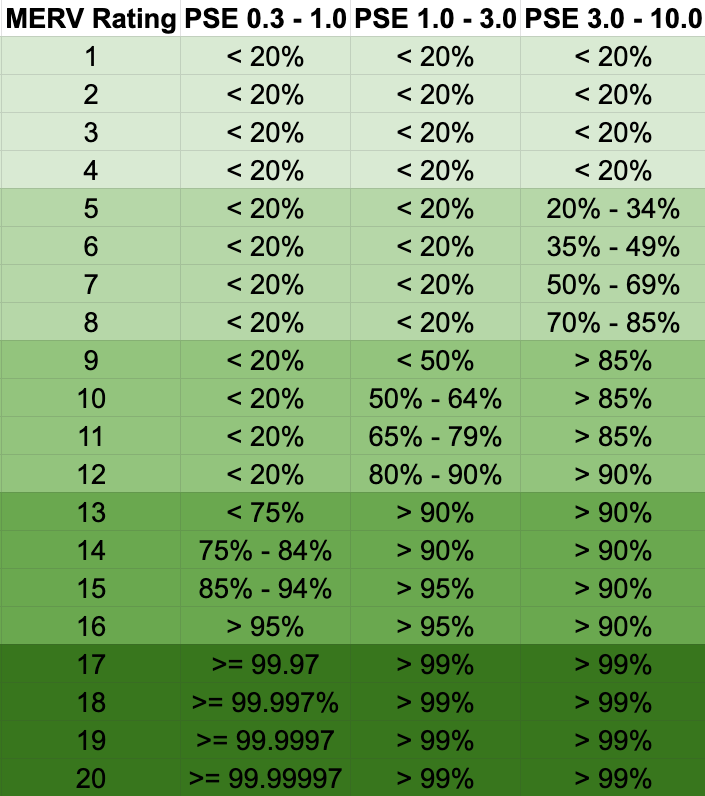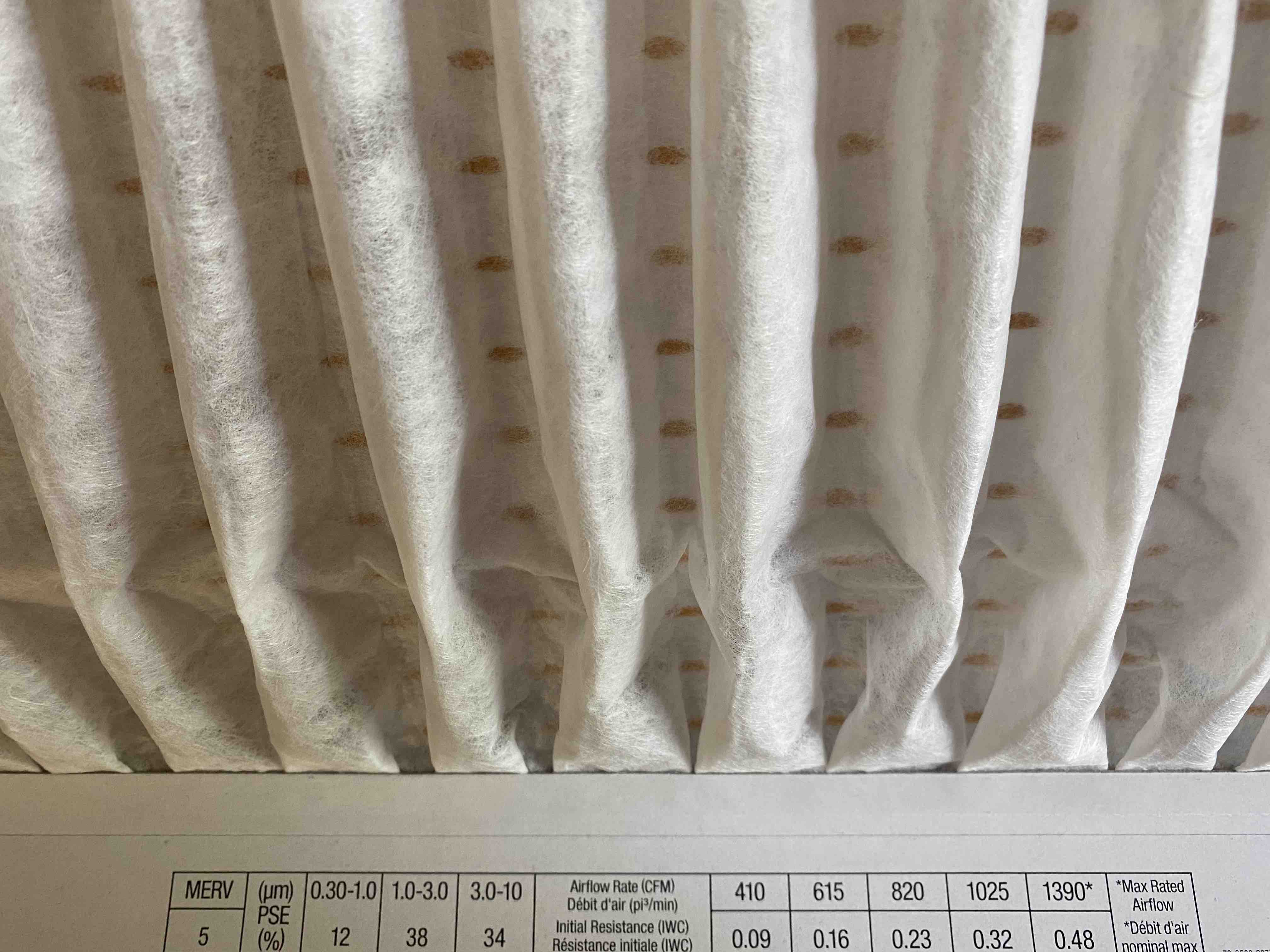MERV vs HEPA Confusion
There is a substantial amount of confusion, half truths and general ignorance around MERV and HEPA filters. I cannot tell if the confusion stems from marketing departments inventing terms like True HEPA or from the fact that consumers think their one inch thick furnace filter they bought in Target or Home Depot is a HEPA filter. Personally I think the body that invented MERV ratings, (ASHRAE) could take a lot of the blame because of the way they defined the MERV rating scale. The EPA could also take some of the blame because on their HEPA page explaining HEPA, they digress into explaining MERV ratings, in fact the bulk of the page is spent explaining the MERV ratings scale. This conflates two independent standards and makes it easy for marketing departments to take advantage of the confusion and sometimes use scare tactics to market what I believe in lots of cases are overpriced products.
MERV != HEPA
MERV and HEPA are not the same at all. MERV is a rating scale and HEPA is a minimum efficiency standard. They should not be confused or mixed up because they describe two very different things. They sometimes use a lot of the same language but they’re not the same.
MERV Rating Scale
Minimum Efficiency Reporting Value (MERV) is a rating system used to report the effectiveness of air filters. You can find out a lot more at MERV or at the EPA What is a MERV rating site. The chart below unlike some other charts that show lower ratings as red is showing everything as a color gradient of green. The reason I didn’t show the low MERV ratings as red or yellow is because in some cases filters with a low MERV rating are capable of filtering air well enough to be effective. I tested a cheap Honeywell MERV 7 filter and it performed really well.
HEPA Standard
HEPA is a standard with an absolute minimum requirement on efficiency. It’s not a scale because it does not have range of measurements that make up HEPA. There are some slight differences internationally on what constitutes the minimum efficiency of a HEPA filter but in most cases it’s negligible.
Generally HEPA filters are for clean room environments and these have strict ISO standards to be followed which requires strict standards on the air filtration. Your normal Furnace filter is almost certainly not a HEPA filter and it will be rated using the MERV rating scale.
A MERV rated filter cannot and should not be called a HEPA filter unless it filters out 99.97% (USA) 99.95% (UK) of all particulate matter at 0.3 microns. If you want to know why 0.3 microns was chosen as the one size to rule all sizes I cover it in the article.
ULPA
There is another standard that is related to HEPA which is the ULPA standard. We will not cover much on this because it’s not necessary for in home air filtration to my knowledge.
PSE (Particle Size Efficiency)
Some modern furnace filters are now being labeled with their PSE rating. 3M Filtrete have started adding their PSE rating to all their filters. Unfortunately other brands like Nordic Pure and Honeywell have not added the PSE rating to their filters. I made the mistake of buying 6 Nordic Pure filters at MERV 7 and they didn’t work to filter the air nearly as well as a similar MERV rated 3M or Honeywell brand. I also bought a Nordic Pure MERV 13 filter that does work but it was expensive and 4 inches deep. A similarly rated 3M Filtrete with a lower rating worked better than the Nordic Pure filter. At this time I won’t be using any more Nordic Pure filters for air filtration purposes. Based on my tests I just don’t think they’re as good as 3M or Honeywell for what I’m trying to do.
 Merv Rating scale, numbers obtained from, EPA What is a MERV rating site
Merv Rating scale, numbers obtained from, EPA What is a MERV rating site
You can see in the chart above that the MERV standard doesn’t set a minimum for anything MERV 4 and under. This was a missed opportunity and has led to all sorts of marketing nonsense. In effect I could take a T-Shirt from my wardrobe and sell it as MERV 4 because there’s no way to verify it. Essentially anything MERV 8 and under doesn’t technically need to filter any PM2.5 matter from the air. This is what a lot of the air purification companies are using to scare people. I think The folks over at 3M created their MPR rating because of this lack of clarity.
The following image is from a MERV 5 3M Filtrete.
 3M MERV 5 Larger Image
3M MERV 5 Larger Image
In the image above you can see the PSE rating at the bottom of the filter. If we take the 0.30-1.0 micron reading it has a PSE rating of 12. This indicates that it will filter out particles in this size range at a rate of 12%, i.e. If 100 particles get pushed at the filter, 12 get trapped and 88 get passed. What this means is that as the air gets passed through the filter each pass removes 12% of particles at 0.3-1.0 microns in size. So even a lot MERV rated filter is removing particulates from the air
Unfortunately Honeywell have not started adding the PSE ratings to their filters yet.
Can a low MERV rated filter clean my air
If it’s a good quality filter like 3M Filtrete, or Honeywell brands then yes a lower MERV rated filter can clean your air.
The following table is for 3M Filtrete filters only. Assuming we’re using a standard 20x20 inch box fan with a CFM of 500 after attaching the 20x20 inch filter the table shows how any hours it takes to have the air cleaned in a 1500 sq ft house. Of course this assumes perfect air circulation around the house etc but you get the idea, if you’re in the house most of the day and you have a fan in your room with a MERV 5 filter it will filter the air, slowly, but it will clean it.
The difference in price between a MERV 5 and a MERV 13 filter is $10 - $15. Personally I like to use the higher MERV rated filters in addition to a low MERV filter where the low MERV rated filter is in front of the high MERV filter, this means the low MERV cheap filter will need replacing more often than the expensive high MERV filter which means I can double the life of the more expensive filter.
| MERV | MPR | PSE: 0.30-1.0 µm | Hours |
|---|---|---|---|
| 5 | 300 | 12% | 14 |
| 11 | 1000 | 41% | 4 |
| 13 | 1900 | 62% | 2 |
One thing I would like to do some research on is if Brownian motion helps us by moving the dust particles around the house.
Are the Filters at Home Depot HEPA filters?
Almost all the furnace filters you find at the big box stores or target, Costco etc are not HEPA because they do not satisfy the HEPA standard.
So what MERV rating do I need to filter my air?
This is where the fun starts. The marketing departments of a lot of the air filtering companies have taken full advantage of the gaps in the MERV rating scale and added a ton more confusion with terms like True HEPA etc.
The answer as always with anything complex is, it depends, it depends on what you’re trying to do. If you just want the particulates removed from the air in your home then the MERV rating can vary depending on how fast you want the air cleaned and how much you want to spend but you do not need an expensive filter to clean your air. For our use case all I want is to get the air in my home clean in every room at minimal cost. The following experiments show that a mid range filter can be very effective at cleaning the air in a room.
Disclaimer / Caveat Emptor
Your situation may vary from mine so please do your own testing and make your own decisions and figure out what works for you.
